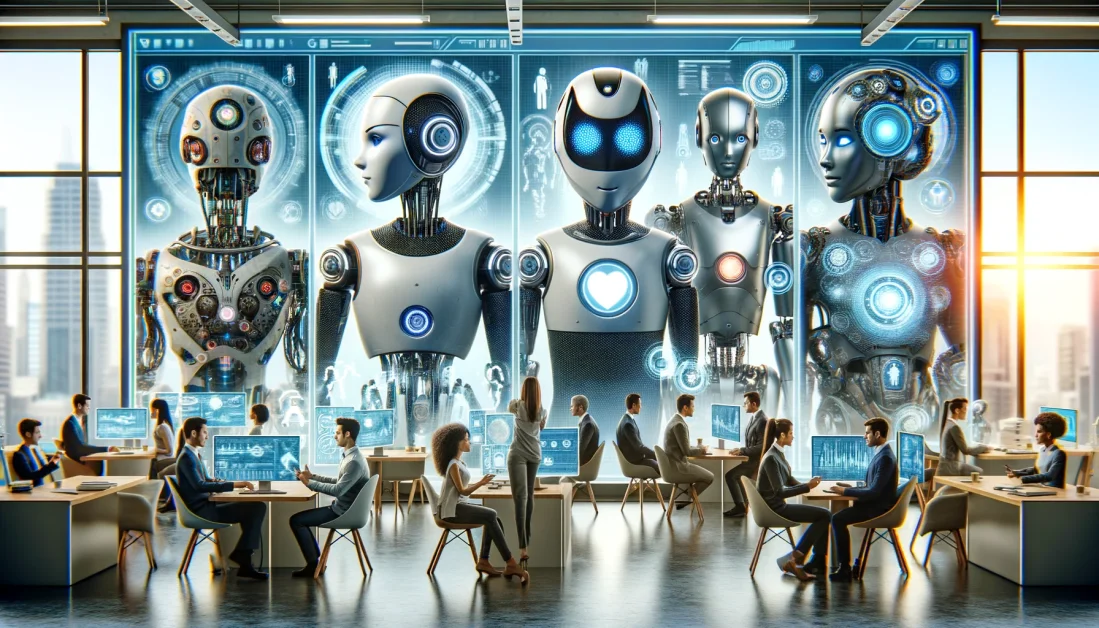What are GPTs?
GPTs, introduced by OpenAI in November 2023, are customizable versions of the ChatGPT model. They represent a significant shift from general-purpose AI chatbots to specialized, purpose-driven AI assistants. GPTs can be tailored for specific tasks, making them more effective and efficient in various domains, from education and gaming to business and creative arts.
OpenAI new GPT Builder (GPTs)
Key Features and Capabilities
- Customization Without Coding: One of the most groundbreaking aspects of GPTs is that they require no coding skills to build. This makes it accessible to a broader audience.
- Wide Range of Applications: GPTs can be designed for myriad uses, such as teaching math, assisting in game rules interpretation, or creating digital content like stickers.
- Integration of Extra Knowledge: Users can feed additional information into GPTs, enhancing their ability to handle specialized tasks.
- Functional Flexibility: GPTs can incorporate capabilities like web searching, image creation, and data analysis, depending on the user’s needs.
Creating a Custom GPT: Simplicity and Efficiency
Creating your personalized GPT app is a straightforward process that requires no coding knowledge, making it accessible for anyone with an idea. Here’s a simplified guide on how to bring your custom GPT to life:
Step-by-Step Guide to Creating Your Personalized GPTs App
- Login and Navigate: First, log into your ChatGPT account. Look for the “Explore” section, which is usually located on the top left of your screen. This is where you’ll find all the GPT applications you have access to.
OpenAI ChatGPT
- Create Your GPT: Click on ‘Create My GPT’. You’ll be taken to a new screen. Here, you’ll be prompted to describe what your GPT should do.
GPTs Interface
- Set Your Prompt: Input your prompt with clarity and purpose. For our example we created a “Code Mentor” by entering a prompt: “Create an AI that provides clear explanations and guides users through algorithms and data structures, capable of facilitating real-time problem-solving sessions.”
Building a Coding Mentor with GPTs
- Refinement: ChatGPT may ask follow-up questions to refine your concept. This step ensures your GPT is aligned with your vision and is capable of performing its intended functions efficiently.
- Testing and Customization: Once created, your GPT appears on the right side of the screen. Here you can test its capabilities and fine-tune its functions. For the “Code Mentor” you might test it with queries like “Explain the concept of dynamic programming” or “Guide me through implementing a binary search tree.”
- Save and Share: After you’re satisfied with your GPT, you can save your settings. Then, take advantage of the option to share your GPT with others. This is done through a link, making collaboration easy and promoting a community-oriented approach to AI development.
Remember, while Plus users have immediate access to use the GPTs via shared links, the creators won’t have access to the chats others have with their GPTs,.
Open AI mentioned that Privacy and safety are at the heart of GPTs. Chats with GPTs remain private, not shared with builders, and users have full control over whether data is sent to third-party APIs. Additionally, builders can decide if interactions with their GPT should contribute to model training, giving users and builders alike control over data usage and privacy.
Connecting GPTs to Real-World Applications
Beyond explanations, these GPTs can connect to external data sources or perform actions in the real-world. For instance, you could create a “Shopping Assistant” GPT that helps with e-commerce orders, or a “Travel Planner” GPT that integrates with a travel listings database.
Empowering Enterprises with Custom GPTs
Enterprises can take advantage of internal-only GPTs for specific use cases. This could range from a “Marketing Assistant” that helps draft brand-aligned materials to a “Support Helper” that aids in customer service. These GPTs can be deployed securely within a company’s workspace, with full administrative control over sharing and external GPT usage.
5 custom GPT applications that users have created
- Movie & Show Recommendation GPT
- Creator: Ammaar Reshi
- Description: A bot that recommends movies and shows based on your taste, including where to stream or rent and can even analyze your Letterboxd.
- Features: No coding required, utilizes web browsing capabilities for up-to-date recommendations.
- Link: What Should I Watch GPT
These summaries show how users can leverage OpenAI’s platform to create AI applications that address a wide array of needs and interests.
Conclusion
The evolution of AI technology with OpenAI’s GPT-4 Turbo and the introduction of customizable GPTs represent a significant leap forward in the field of artificial intelligence. GPT-4 Turbo’s enhanced context window and integration with visual and auditory capabilities mark a new era of conversational AI that is more accurate, detailed, and versatile. The GPTs, with their user-friendly customization options, open up endless possibilities for personal and professional use, democratizing AI technology and making it accessible to a wider audience.

